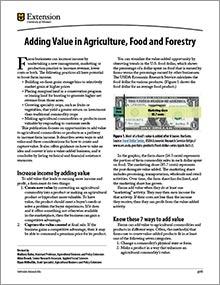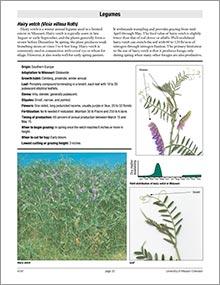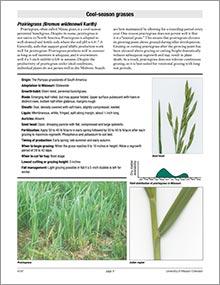

Fresh Fruit and Vegetable Cards
New $25
Editor’s note
The following abstract describes a publication that is only available for purchase.

MyPlate for Adults — What's on Your Plate? (Bundle of 25)
Revised $12
Editor's note
The following abstract describes a publication that is available for purchase or as a downloadable PDF.

Five Phases of Management Transition During Family Farm Succession
New
Use a gradual process to transition farm management responsibilities from one generation to the next to improve the odds of keeping your farm in the family. This 5- phase process asks multiple generations to set goals, timelines and evaluation milestones.

MyPlate Poster
Revised $34
Editor's note
The following abstract describes a publication that is available for purchase or as a downloadable PDF.

Fruit Bingo Cards
Revised $13
Editor's note
The following abstract describes a publication that is only available for purchase.

Controlling House Mice
Reviewed
Learn to identify signs of house mouse infestations and implement effective control methods, including sanitation, exclusion, and trapping.

Assisting the Beef Cow at Calving Time
Reviewed
Six to 10 percent of all calves born in beef cow herds in the U.S. die at or soon after birth. About half of those deaths are due to calving difficulty (dystocia). The purpose of this guide is to acquaint cattle producers with calving management principles that will help minimize calf loss in their herds.

MyActivity Pyramid for Kids (Bundle of 25)
Revised $12
Encourage kids to be active daily with fun ideas for aerobic, muscle-strengthening, and lifestyle activities—plus tips to reduce screen time.

Managing Missouri Fish Ponds During an Extended Drought
Reviewed
Managing fish ponds during drought requires addressing reduced water levels, fish stress, and oxygen depletion.

Crop Insurance in Missouri
Revised
Learn four types of crop insurance that can manage corn, soybean and other row crop risk. Read about units you can insure and the premium cost for a policy.

MyActivity Log for Kids (Bundle of 25)
New $15.50
Editor's note
The following abstract describes a publication that is available for purchase or as a downloadable PDF.

Adding Value in Agriculture, Food and Forestry
Reviewed
See 7 ways to add value to farm commodities or products, and learn how to turn a value-added agriculture idea into a business that can increase farm income.

Livestock Gross Margin (LGM) Insurance
Revised
LGM insurance helps producers manage risk by guaranteeing a minimum gross margin. Learn how it works, and see cattle, swine and dairy examples in this guide.

Establishing and Managing Cover Crops in Missouri for Wildlife and Pollinator Benefits
New
Learn how to establish and manage cover crops in Missouri to improve soil, attract wildlife, and support pollinators year-round.

Introduction to Local Food Systems
Revised
Learn how to create rural and urban local food systems that are profitable and sustainable, connect farms to consumers and support the community and economy.

Preserve It Fresh, Preserve It Safe: 2022, No. 5 (September/October)
New
Learn how to safely store canned goods and dry apples at home with research-backed tips for quality and food safety.

Dairy Grazing: Selecting the Right Forage, Page 26
Reviewed
Crimson clover is a high-protein legume ideal for early spring grazing. Learn about its growth, benefits, and ideal conditions for effective dairy grazing.

Dairy Grazing: Selecting the Right Forage, Page 29
Reviewed
Red clover, a short-lived perennial legume well-suited for Missouri pastures, offering high-quality forage and adaptability to less-than-ideal soil conditions.

Dairy Grazing: Selecting the Right Forage
Reviewed
Dairy grazing publication series
This publication is one in a series about operating and managing a pasture-based dairy. Although these publications often refer to conditions in Missouri, many of the principles and concepts described may apply to operations throughout the United States.

Dairy Grazing: Selecting the Right Forage, Page 03
Reviewed
Forage selection for dairy grazing, focusing on Kentucky bluegrass, its growth, management, and benefits. Ideal for grazing systems in northern regions.

Dairy Grazing: Selecting the Right Forage, Page 06
Reviewed
Discover the characteristics, growth habits, and management practices for prairiegrass (Bromus wildenowii Kunth) in dairy grazing systems.

Dairy Grazing: Selecting the Right Forage, Page 09
Reviewed
Discover the benefits of Smooth bromegrass for dairy grazing, including its growth habits, adaptability, and tips for optimal management.

Dairy Grazing: Selecting the Right Forage, Page 12
Reviewed
Explore tips on selecting and managing bermudagrass for dairy grazing. Learn about its growth habits, yield, and care for optimal forage production.

Dairy Grazing: Selecting the Right Forage, Page 15
Reviewed
Crabgrass is a high-quality, warm-season forage that thrives in various conditions, offering valuable nutrition for livestock.
